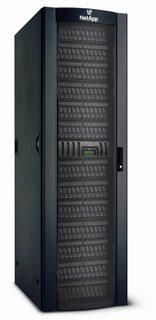
It's evident that VTLs are becoming popular backup and recovery targets. Among others, Netapp has also jumped onto the bandwagon, I figured I'd talk a little bit about the NearStore VTL offering.
A year ago Netapp announced the acquisition of Alacritus. At the time Alacritus was a privately held company out of Pleasanton, CA and Netapp first partnered with Alacritus around December 2004. Together they offered a solution comprised of a Netapp Nearline storage array and the Alacritus VTL package. Less than 6 mos later Netapp decided to own the technology so it acquired Alacritus.
Alacritus Background
As mentioned above, Alacritus was a privately held company. Alacritus has been in the VTL business and in the general backup business a lot longer than people think. The principals at Alacritus have been together for 15 years and are responsible for several backup innovations. They are the ones who with Netapp co-developed the Network Data Management Protocol (NDMP). They developed BudTool which was the first open systems backup application. They developed Celestra, which is the the first server-less backup product. They pioneered XCOPY, extended copy SCSI command. In 2001, Alactitus developed the 1st VTL and have been delivering it since then, before other VTL competitors were even incorporated. Alacritus strategy at the time was to sell the solution thru OEMs and resellers in Japan. Most notably Hitachi.
Technology
There are several technological innovations within the Netapp NearStore VTL delivering key benefits to customers but i'll only address 3-4 of them as I don't want to write an essay.
- Continuous Self-tuning - The NearStor VTL continuously and dynamically load balances backup streams across *all* available resources (disks) thus maintaining optimal system performance without developing hot spots. That means that backup streams are load balanced across all the Disk Drives across all Raid Groups for a Virtual Library which in turn means that Virtual Tapes do not reside at fixed locations. That provides the ability to load balance traffic based on the most available drives. Utlimately, what this means is that customers do not have to take any steps to manually tune the VTL.
- Smart Sizing - Smart sizing is based on the fact that all data compresses differently. Since data compresses at different rates, the amount of data that will fit into a tape changes from backup to backup. If you take into account that a Virtual Tape eventually will be written to a Physical Tape you want to make absolutely sure that the amount of data on the Virtual Tape will fit onto the Physical Tape. To address this, most VTL vendors make the capacity of the Virtual Tape equal to the Native capacity of the Physical Tape. The NearStor VTL offers a unique approach. By using high-speed statistical sampling of the backup stream, and by having knowledge of the Tape Drive's compression algorithm, it determines how well the data will compress when it gets to the Tape drive, and adjusts the size of the Virtual Tape accordingly to closely match the compressed capacity of the Physical Tape drive. As a result of this, customers obtain significantly higher physical media utilization rates compared to other VTLs. As an example, consider a backup of 400GB and a tape cartridge with a native capacity of 200GB. A typical VTL will need 2 Virtual Tapes each with a 200GB native capacity. If the Physical Drive compresses at 2:1 ratio that means that you'll write 200GB thus filling 1/2 of the tapes plus you'll need 2 Physical tapes to export to. With Smart Sizing, the Virtual Tape size will be adjusted to 1 Virtual Tape of a 400GB size. At a 2:1 drive compression ratio, you only need 1 Physical Tape of 200GB that will be fully utilized. The point is less cost by purchasing and managing less tapes.
- Data Protection - There are 2 mechanisms that enable Data protection within the NearStore VTL. RAID and Hot Sparing is one. The second mechanism is called Journaled Object Store (JOS). All metadata is Journaled ensuring the data integrity of committed writes, even in the event of an unclean shutdown. Metadata is stored in multiple places and the data on each disk is self-describing. What that means is that in the event of a catastrophic failure where the appliance's metadata is completely lost, data that is still available on disk can be accessed. One thing of importance is other VTLs will lose all data if their metadata ever becomes inaccessible.
- Pass-Thru Restores - When a physical tape is selected for a restore, it automatically gets imported as a virtual tape and data is copied in the background. However, if a specific file is requested that has not been copied to the virtual tape yet, the NearStore VTL will use a pass-thru mechanism, select the specific file from the physical tape and restore it. After the specific process has been completed, it will continue importing the rest of the image.
One thing that our customers find important is that Netapp owns the technology without 3rd party dependencies that control the development and provide 2nd or 3rd level support of the core technology.

No comments:
Post a Comment